What is Red Miso Soup (Akadashi)?
Red miso soup, or aka-dashi, is a specific variety of miso soup predominantly prepared using red miso mixed with soybean miso. Esteemed for their distinct flavor, Hatcho miso and Nagoya miso are prime examples of the red miso types used in preparing aka-dashi.
Incidentally, I grew up about a 15-minute walk from the Hatcho Miso factory, and it is no exaggeration to say that aka-dashi is the most common type of miso soup in my hometown. It is commonly eaten in the Tokai region, mainly in Aichi Prefecture.
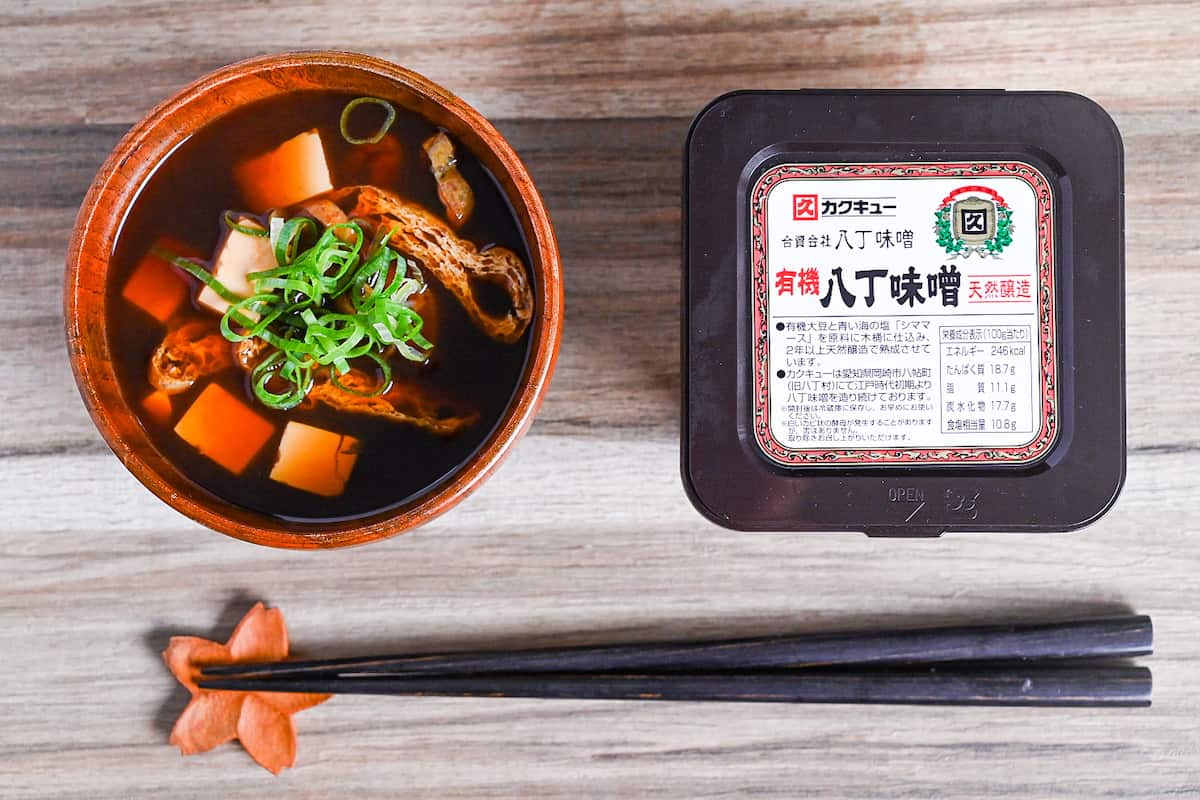
Despite “dashi” in its name, aka-dashi does not necessarily indicate the inclusion of dashi. Products can be labeled as “aka-dashi,” regardless of the presence or absence of dashi. Instead, the defining characteristics of aka-dashi derive from using soybean miso-a meticulously aged blend of soybeans, salt, soybean koji (malt), and water. This results in a flavor profile abundant in bean richness, profound depth, and a hint of bitterness.
Historically, aka-dashi was a dish predominantly prepared in traditional Japanese-style restaurants. However, it eventually infiltrated the commercial sphere and gained recognition as a popular home-cooked dish. This transition was spearheaded by the commercialization of “aka-dashi miso” in Nagoya around 1955. Subsequently, numerous companies within the Tokai region producing soybean miso began commercializing their products, leading to the nationwide popularity of aka-dashi.
However, in my experience, red miso is an acquired taste, and people outside Aichi Prefecture are divided between those who like aka-dashi and those who do not.
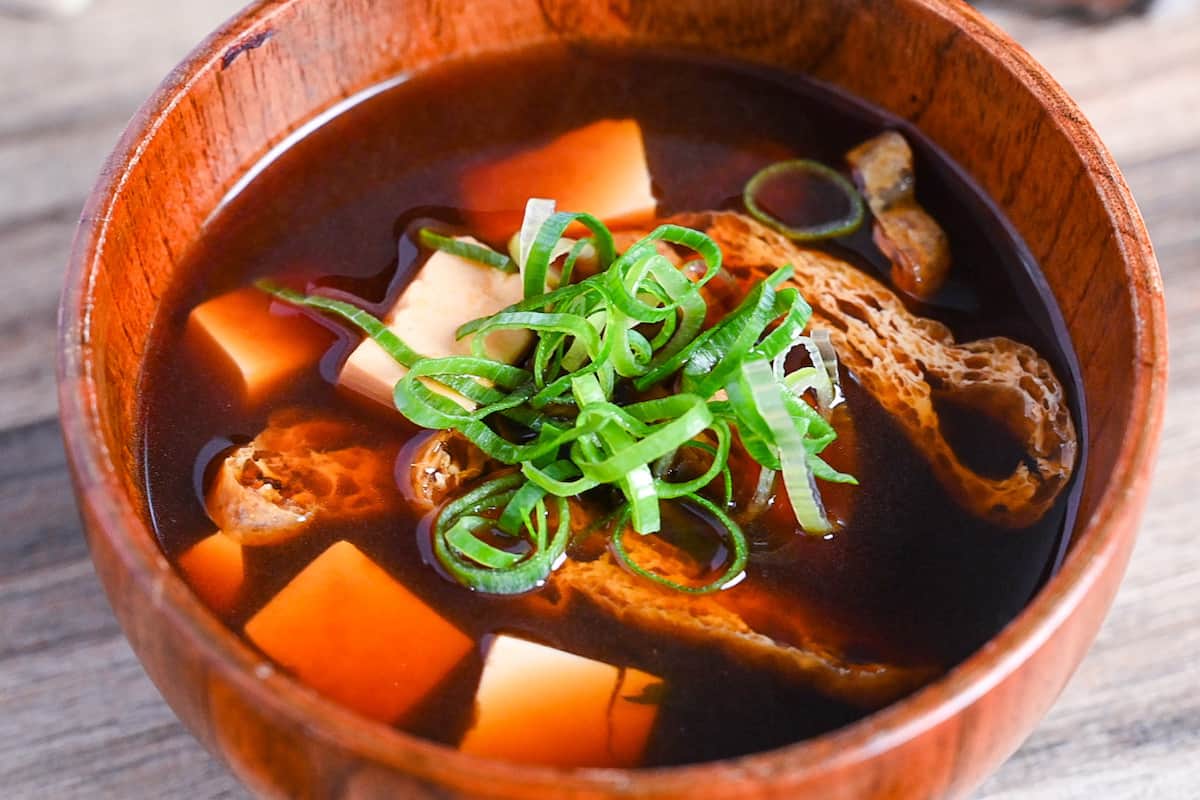
Visual Walkthrough & Tips
Here are my step-by-step instructions for how to make Authentic Red Miso Soup at home. For ingredient quantities and simplified instructions, scroll down for the Printable Recipe Card below.
Start by pouring your dashi into a saucepan and bring it to a boil over a medium heat.
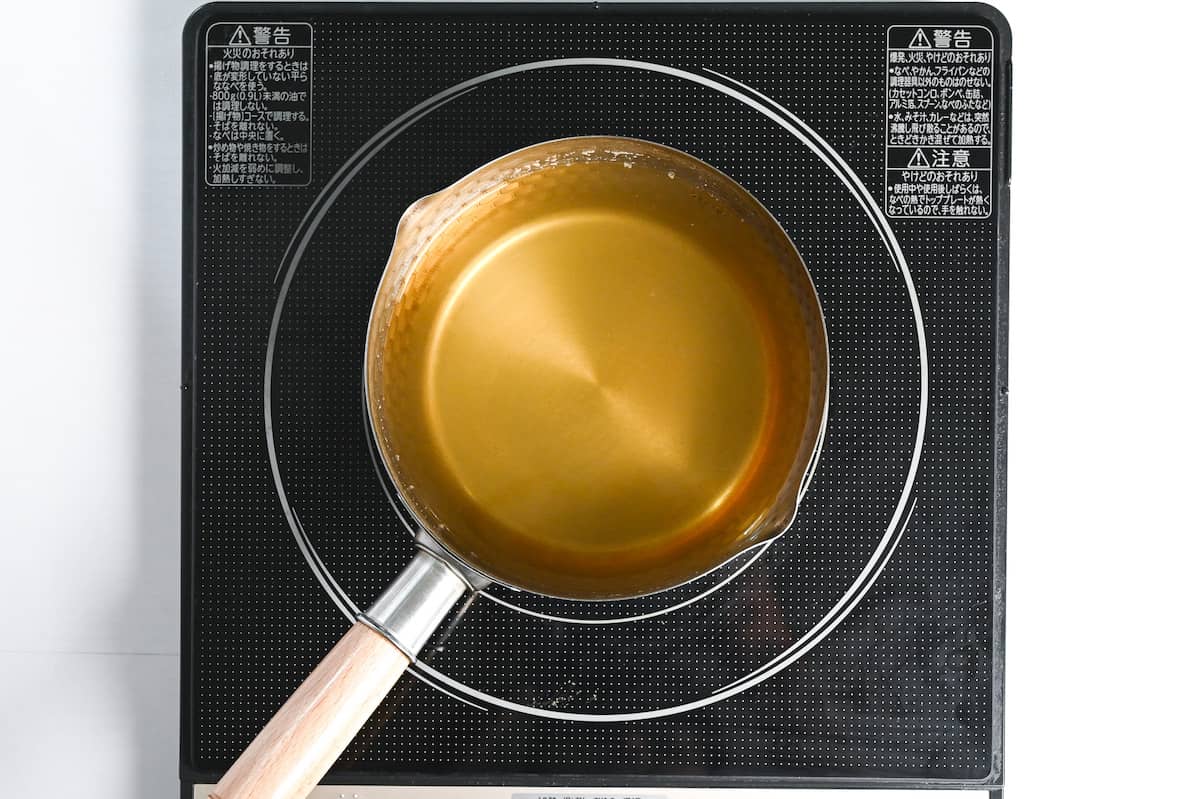
Cut the tofu pouch into thin slices and add them to the dashi broth along with the dried wakame. Wakame expands a lot once added to the water so a little goes a long way.
Adding the ingredients will lower the heat of the dashi, so wait for it to bubble again and then lower the heat to a simmer.
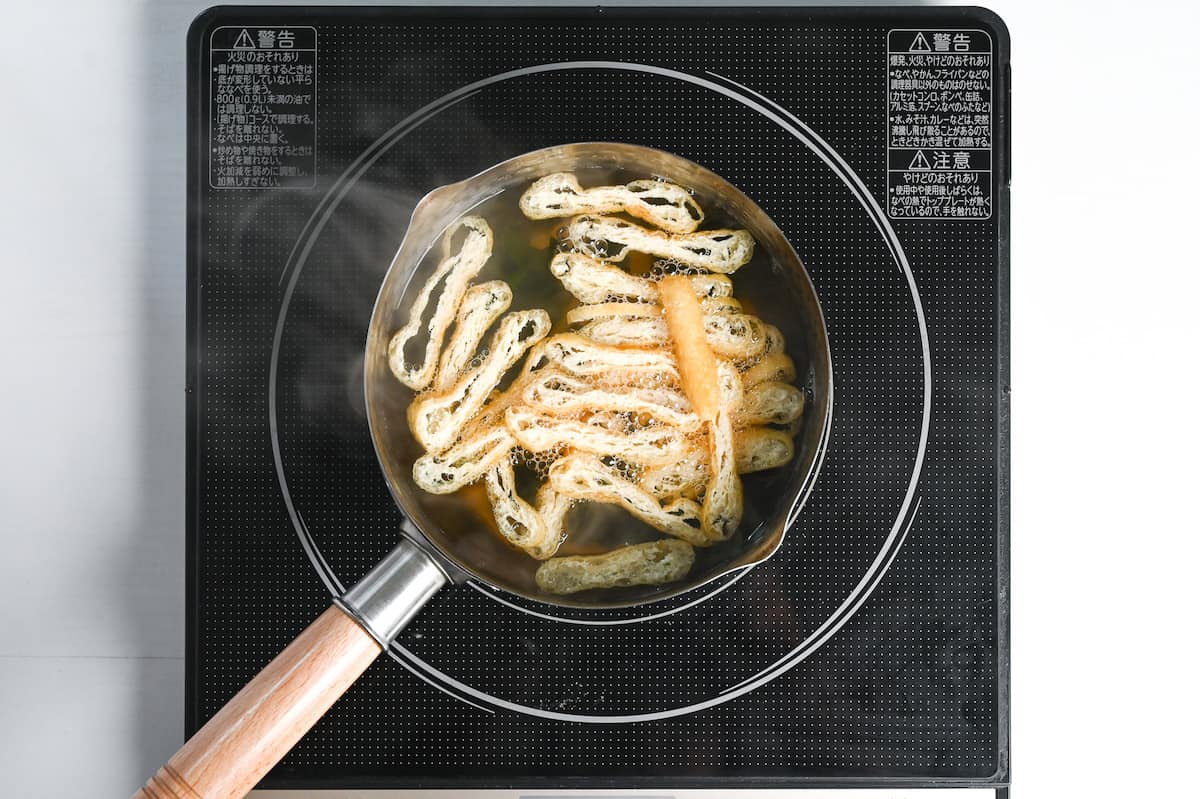
Cut the tofu into cubes and add it to the soup. Continue to simmer until the tofu is heated through, turn off the heat and add the red miso paste and a dash of soy sauce. Since miso paste is prone to clumping, I recommend placing the miso onto a mesh spoon, submerging it into the dashi and using a mini whisk to break it up and evenly incorporate it into the broth.
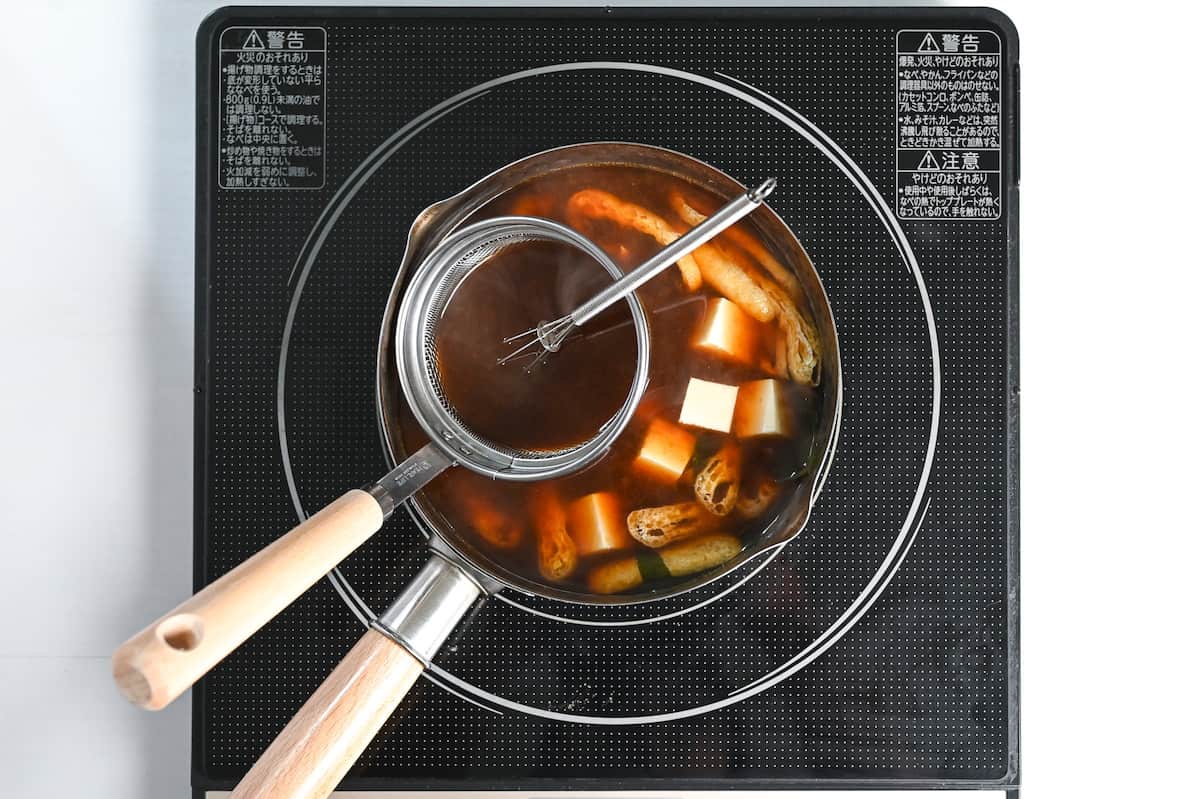
If you don’t have a mesh spoon, pour a small amount of hot dashi into a heatproof bowl and whisk in the miso paste to loosen up the consistency before adding it to the rest of the soup.
Divide into serving bowls and enjoy! I often top my aka-dashi with chopped green onion for a pop of color and a refreshing taste to complement the richness of the soup.
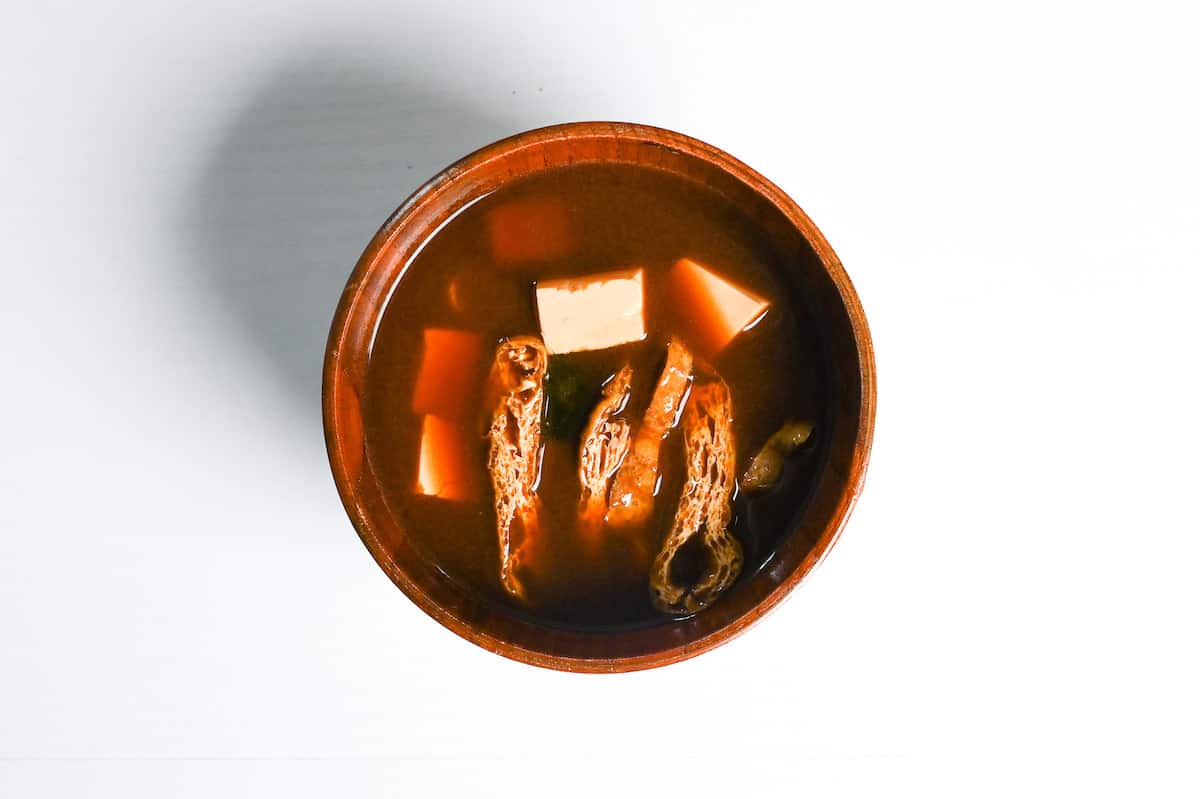
How to Store
If you find yourself with leftover miso soup, you can let it cool and then store it in the refrigerator. Keep in mind that reheating miso soup will cause the flavor to deteriorate so gently reheating on the stove is preferred over using the microwave. Consume leftovers within 2 days and avoid leaving it out at room temperature.
If you want to prepare miso soup in advance, I recommend making dashi and cutting/cooking vegetables and storing them separately in the fridge. Miso soup can be made quickly when all the elements are prepared in advance, making it suitable for breakfast, lunch or dinner.
Storage summary
Room temperature – Not recommended.
Refrigerated – 2 days.
Frozen – Not recommended.
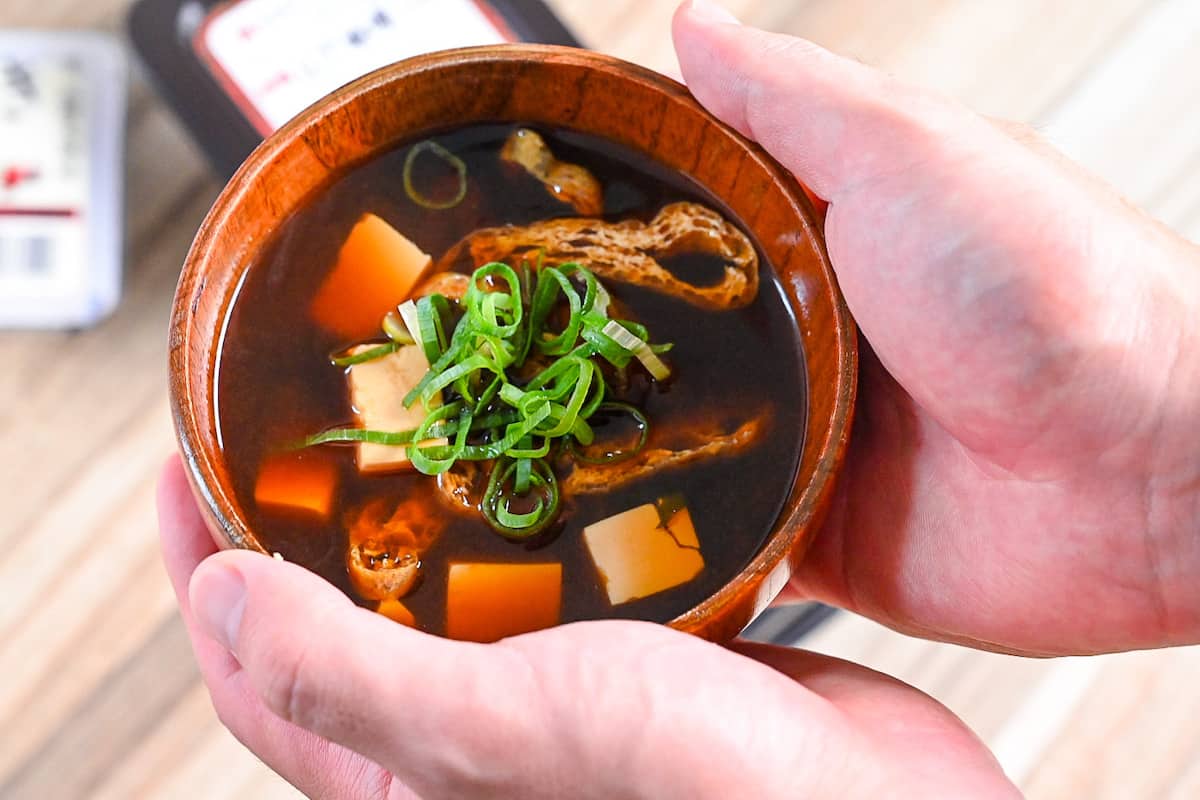
I hope you enjoy this Red Miso Soup recipe! If you try it out, I’d really appreciate it if you could spare a moment to let me know what you thought by giving a review and star rating in the comments below. It’s also helpful to share any adjustments you made to the recipe with our other readers. Thank you!
More Miso Soup Recipes
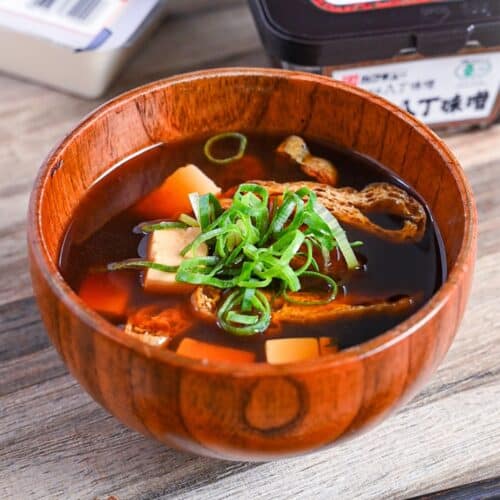
Red Miso Soup (Akadashi)
Equipment
- Mini whisk
Ingredients
- 500 ml dashi stock make it vegetarian/vegan by using plant-based dashi
- ½ tbsp dried wakame seaweed
- 15 g fried tofu pouch (aburaage) (aburaage) sliced
- 75 g firm tofu (or silken tofu depending on preference) cubed
- 2 tbsp red miso paste I recommend Hatcho Miso if you can get it
- 1 dash Japanese soy sauce (koikuchi shoyu)
- finely chopped green onions optional garnish
My recommended brands of ingredients and seasonings can be found in my Japanese pantry guide.
Can’t find certain Japanese ingredients? See my substitution guide here.
Instructions
- Pour 500 ml dashi stock into a saucepan and bring to a boil over a medium heat.

- Add ½ tbsp dried wakame seaweed and 15 g fried tofu pouch (aburaage) and bring to a boil once more. Add 75 g firm tofu and then lower the heat to a simmer. Once the tofu is warmed through, turn off the heat.

- Place 2 tbsp red miso paste onto a mesh spoon, and submerge it into the dashi. Whisk until it breaks up into the soup. (See note) Add 1 dash Japanese soy sauce (koikuchi shoyu) and mix well.

- Divide into serving bowls and enjoy with a sprinkle of finely chopped green onions!

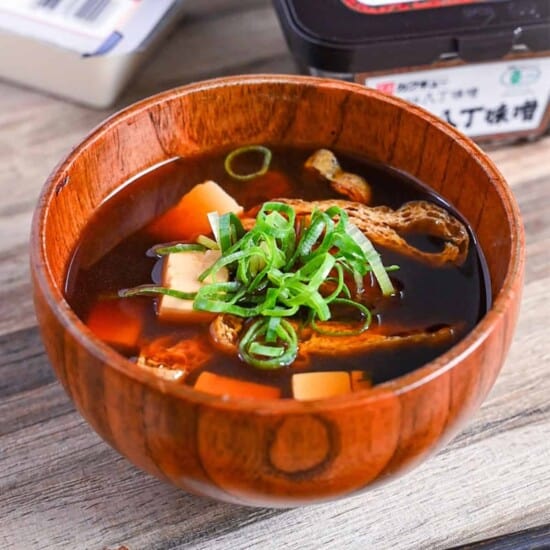


Leave a rating and a comment